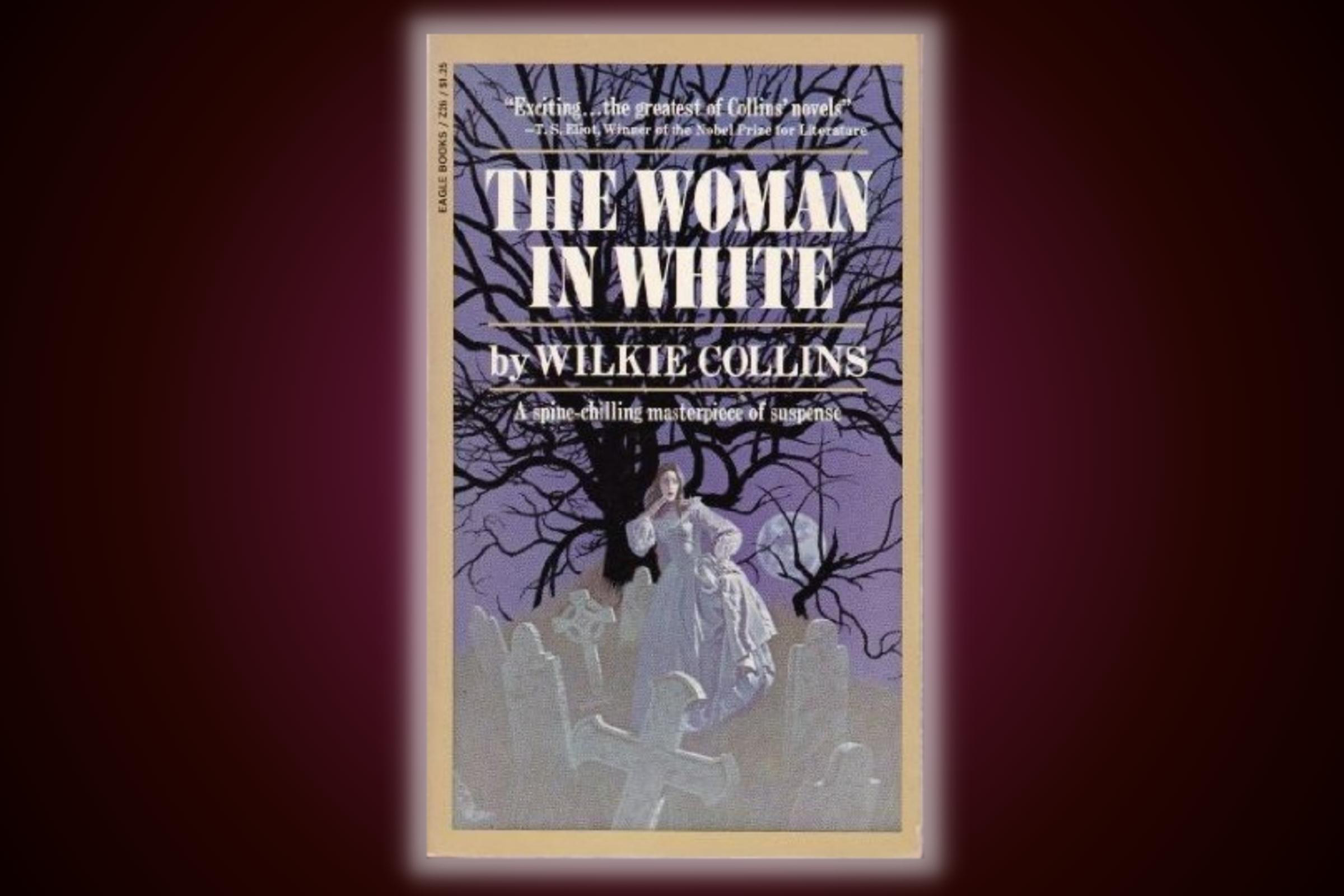Serialized in 1859 and published as a complete work in 1860, Wilkie Collins’ The Woman in White catapulted the English writer’s career to new—and lucrative—heights during his lifetime, making his work the talk of middle-class Victorian society. The epistolary novel, which was published in Charles Dickens’s journal All The Year Round, follows multiple narrators to fictionalize a true case that Collins found in a French crime book called Recueil des Causes Celebres. In The Woman in White, Frederick Fairlie is a well-to-do hypochondriac who hires Walter Hartright to tutor his niece and heiress, Laura Fairlie, as well as her half-sister Marian Halcombe. Hartright and Laura develop feelings for each other, but she honors her father’s wishes and marries her betrothed, Sir Percival Glyde, a dislikable figure with questionable motives. The titular character comes in the form of the mysterious Anne Catherick, a falsely imprisoned woman who has escaped from an institution and knows a secret that could disrupt Glyde’s plans. When Laura is drugged and committed to the asylum as Anne, Hartright takes on the role of a detective, turning to sleuthing techniques to prove Laura’s identity and uncover what Glyde is hiding.
More from TIME
With its use of melodrama and domestic realism, the novel helped to pioneer the genre of sensation fiction. It also put a new twist on the tropes of gothic romance while serving as an early iteration of a detective novel. Two months into its serialization, Dickens called the story “masterly,” and to this day, the book is widely regarded as a classic. —Armani Syed
Buy Now: The Woman in White on Bookshop | Amazon
- Donald Trump Is TIME's 2024 Person of the Year
- Why We Chose Trump as Person of the Year
- Is Intermittent Fasting Good or Bad for You?
- The 100 Must-Read Books of 2024
- The 20 Best Christmas TV Episodes
- Column: If Optimism Feels Ridiculous Now, Try Hope
- The Future of Climate Action Is Trade Policy
- Merle Bombardieri Is Helping People Make the Baby Decision
